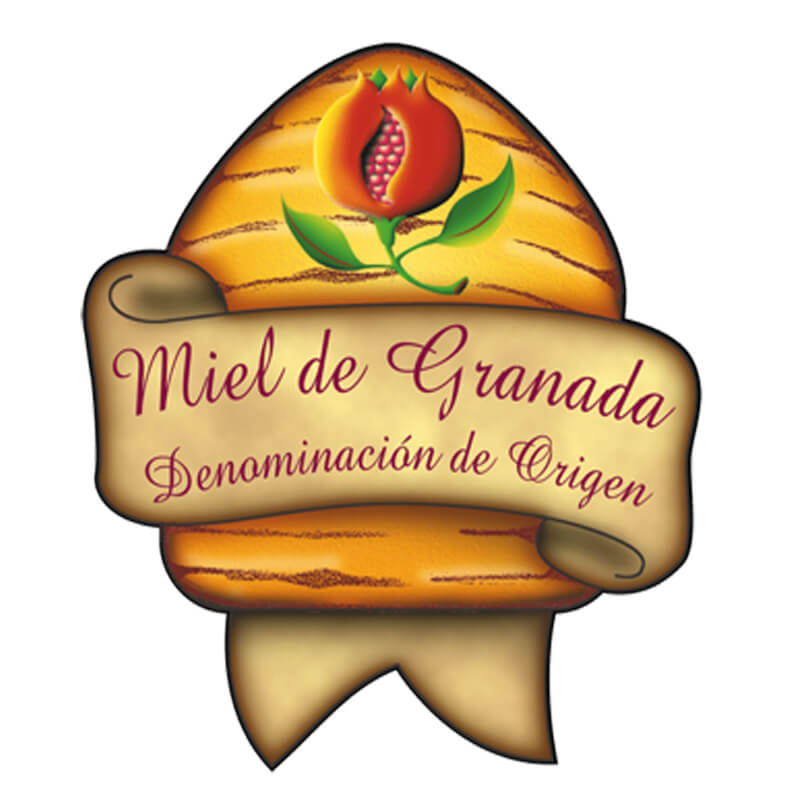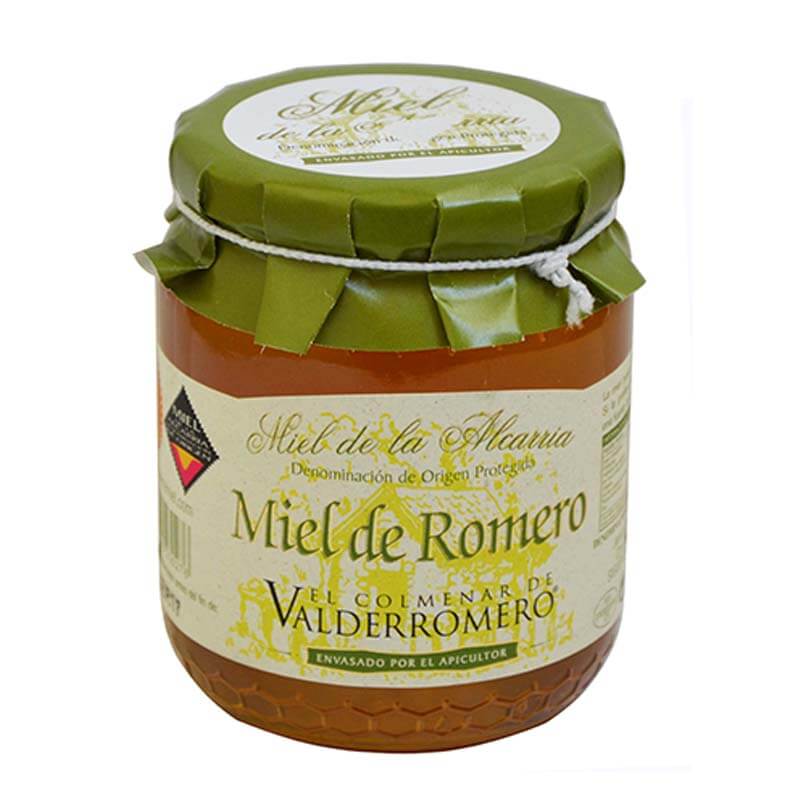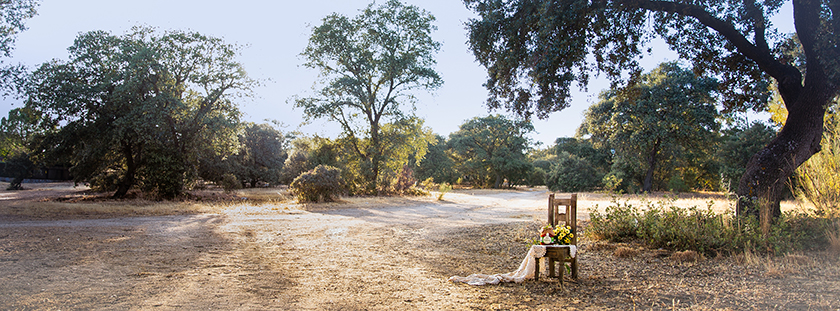Designations of origin in honey
In our shop we have classified the honeys according to their floral origin. However, the honeys as well as the oil and other products, also have Denominations of Origin. Therefore, the Denominations of Origin of the honey, indicate the places with unique characteristics, where honey of maximum quality is produced.
Therefore, in this article, we are going to see all the Denominations of Origin of honey:
- Appellations of Origin in Honey
- Types of Denominations of Origin in honey
We are currently working with several Denominations of Origin in honey. Designations of Origin such as La Alcarria and Tenerife. You can also read more about honeys in our article: The best honeys in Spain
1. Designations of origin in honey
The Denominations of Origin in honey as well as in oil and other products such as olive oil, seek to protect and differentiate the unique characteristics of the area. Unique characteristics that give in this case, aromas and properties different to honey. Likewise, the Denomination assures us with its demanding criteria the origin of the honey. Therefore, when taking honey with Denomination of Origin we make sure that it has not been adulterated and that it is 100 percent from this area. Since the denominations do not allow any mixture nor that the bees leave the delimited species.
However, all the bureaucracy and control requires some costs that some cases are high, falling finally in the price of honey. For this reason, honeys with Designation of Origin will always have a higher price than other honeys.
Finally, it must also be recognised that a honey with a designation of origin does not have to be better than one without. For the same beekeeper can take the decision not to apply this mark to the same production.
2.Types of Denominations of Origin in honey
Next we show you the Denominations of honey that there are nowadays.
|
|
|
|
|
|
Cuadro con todas las denominaciones de Origen de la miel
Table of all honey designations of origin
a) Pomegranate Honey
The Denomination of Origin of Honey from Granada covers all the municipalities of Granada. Although within that Denomination, it differentiates several areas in the same province. These areas are the following:
La Costa: In the southern part of the province, as its name suggests, in the area bordering the Mediterranean Sea. Also, in this area that also occupies part of the nearby mountain ranges, it is rich in rosemary, thyme and other medicinal plants. Also, in this area there are large plantations of avocados, medlars, orange and lemon trees. From all of them, beekeepers get spectacular honeys.
The northern zone: The northern zone is also mountainous, with very cold and somewhat deserted mountain ranges. Rosemary and thyme are also abundant here.
The Vega: It occupies the western part of the province. This area is occupied by large extensions of fruit and vegetable crops such as medlar, orange and lemon trees. We also find large extensions of medicinal plants such as rosemary and thyme.
The mountains: Central part of the province, where large sunflower plantations abound.
Sierra Nevada- Las Alpujarras: In the centre of the province, which contains some of the highest peaks in Spain. This area has unique characteristics with an abundance of chestnuts, lavender, holm oaks, rosemary and thyme.
Photo 1: Honey mark of Granada
Contact details:

- Phone number: 958 771 196
- E´mail: mieldegranada@mieldegranada.com
- Webpage: mieldegranada.com
b) Tenerife Honey
The honey from Tenerife certifies the honeys that are produced in the Island of Tenerife, in the Canary Islands.
The island of Tenerife has an enormous diversity of flowers and microclimates, leaving this Denomination unique honeys in the world of extreme quality. Likewise, being in a natural park, they will not have any agrochemicals.

Photo: Honey Brand of Tenerife
Contact details:
- Phone number: 922 562 711
- E-mail:apiten@apiten.es
- Webpage: www.mieldetenerife.org
c) Honey from Liébana
Honey from Liébana is the honey protected by this Denomination of Origin and is produced within the municipalities of the region of Liébana, in Cantabria.
The most abundant type of honey produced in this Denomination are heather, chestnut and oak honeys.
Contact information:
- Phone number: 942 26 98 55
- Webpage: www.alimentosdecantabria.com
d) Alcarria Honey
The honey of La Alcarría protects the beekeepers who produce their honey in this region. Region that includes municipalities of Guadalajara and Cuenca.
Among the varieties that are recognized by this Denomination, we have the honey of thousand flowers, thyme and rosemary. The rest of the varieties, such as lavender, lavender, heather, forest and others are not recognized by the Denomination of La Alcarria.
In addition, of numerous municipalities that this Denomination lodges, is the town of Brihuega. Although at the present time, our beekeeper of Moreno Beekeeper does not certify his honey as Alcarria honey.

Photo: Rosemary honey with Designation of Origin of La Alcarria
Contact details:
- Phone number: 639 184 531
- E-mail: consejoregulador@mieldelaalcarria.org
- Webpage: www.mieldelaalcarria.org
e) Villuercas-Ibores Honey
The Denomination of Origin of Villuercas-Ibores, is a Denomination that protects the honeys that are produced in this area of Extremadura. Regions located in the southeast of the province of Cáceres.
In this area rich in water but with very poor soils, chestnut trees, holm oaks and cork oaks abound. So most of the honeys come from the myelates of these trees.
Contact information:
- Phone number: 927 36 93 48
- E-mail: crdomielvilluercasibores@gmail.com
- Webpage: http://mielvilluercasibores.eu/
f) Galician Honey
The Galician Honey Designation of Origin protects and certifies the origin of the honey produced in this autonomous community.
In this denomination exists a great variety of mono- and multi-flower honeys. Among the most abundant are chestnut, heather, eucalyptus and blackberry.
Contact information:
- Phone number: 981 511 913
- E-mail: info@mieldegalicia.org
- Webpage: http://mieldegalicia.org/







Leave a Reply
Want to join the discussion?Feel free to contribute!